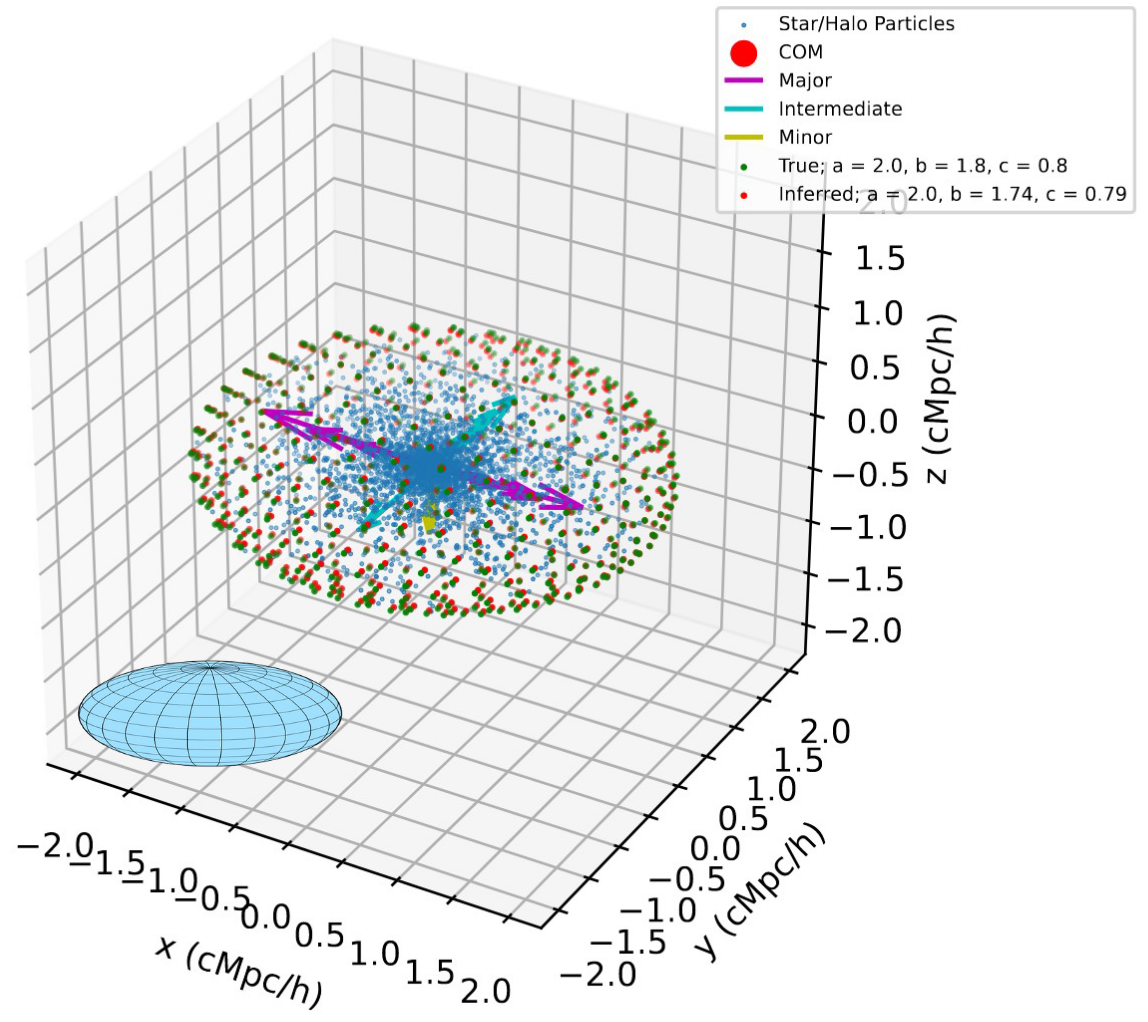Mock Halo Generator
We provide a mock halo generator in the function genHalo(tot_mass, res, model_pars, method, a, b, c) documented in the code reference. The invokation will create a mock halo of mass tot_mass consisting of approximately res particles. Four different density profile models can be invoked, explained in the Density Profile Fitting section.
The function genHalo(tot_mass, res, model_pars, method, a, b, c) will sample halo particles from the density profile specified by method with the model parameters provided as a dictionary model_pars while the principal axis ratios between a, b and c are required to be constant across r = \(r_{\text{ell}}\) = a. The following snippet samples a halo from a \(\alpha \beta \gamma\)-density distribution with parameters r_s = 1, alpha = 1, beta = 3, gamma = 1. The larger res, the higher the halo resolution.
from cosmic_profiles import genHalo
# Generate 1 mock halo
tot_mass = 10**(12) # M_sun/h
res = 500000
r_s = 0.3 # in units of Mpc/h
alpha = 1; beta = 3; gamma = 1
N_bin = 20
r_vir = 2 # in units of Mpc/h
a = np.logspace(-2,0.2,N_bin)*r_vir
b = a*0.2
c = a*0.2 # This will be a prolate halo
method = 'alpha_beta_gamma'
model_pars = {'alpha': alpha, 'beta': beta, 'gamma': gamma, 'r_s': r_s])
halo_x, halo_y, halo_z, mass_ptc, rho_0 = genHalo(tot_mass, res, model_pars, method, a, b, c)
Warning
genHalo() expects tot_mass to be in units of \(M_{\odot}/h\) while a, b and c is expected to be in units of Mpc/\(h\). The output of genHalo() has the same units.
Note
The profile parameter rho_s will be calculated on the fly within genHalo(tot_mass, res, model_pars, method, a, b, c) from tot_mass and the other model parameters, so there is no need to provide that in model_pars.

